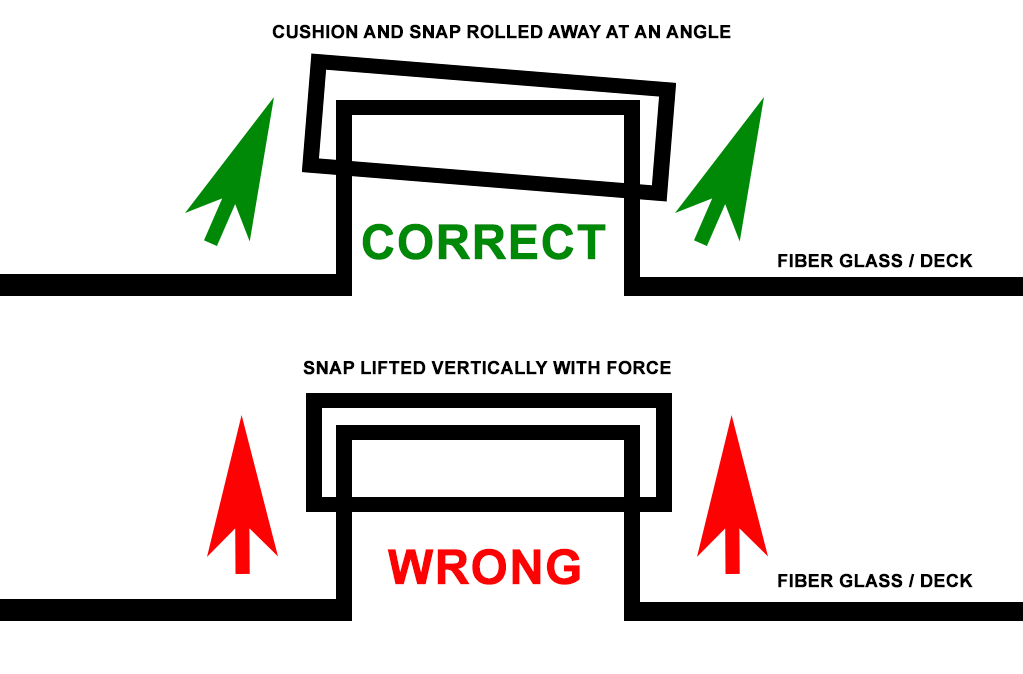The following attachment(s) contain trailer guides for the Sea Born LX26 Center Console.
Author: admin
Where can I find a trailer guide for the Sea Born FX24 Bay & LX24 Center Console?
The following attachment(s) contain trailer guides for the Sea Born FX24 Bay and LX24 Bay.
Where can I find a trailer guide for the Sea Born FX22 Bay?
The following attachment(s) contain trailer guides for the Sea Born FX22 Bay.
Where can I find a trailer guide for my Sea Born SX239 Offshore?
The following attachment(s) contain trailer guides for the Sea Born SX239 Offshore.
I often have visible water in my Spyder near the aft drain plugs while fishing and at rest is this normal?
Where many of our boats are self-bailing, the Spyder FX19 and FX17 do not have this ability when occupied and while trolling at very low speeds or at rest. By design, the cockpit has minimal slope which allows for aSpyder’s low profile in the water. Given this, all new owner kits provide plugs which should be inserted when fishing, low speed trolling, poling, or at rest with passengers. While underway, the cockpit will self bail and the drain plugs can be removed while docked and unoccupied.
Should you require a self-bailing vessel, we recommend our FX Bay Boats, LX Center Consoles, or SX Offshore models.
Will the Spyder FX17 Flicker fit in my garage?
There are three factors to consider when answering this question. The first and most obvious is, what is the length of your garage or storage building. Typically, a two-car garage will be 18-feet wide by 20-feet deep. Next you’ll add in the length of the boat, it’s outboard, and the trailer’s tongue. Combined, the FX17 will almost certainly need a folding tongue to fit within a standard-sized garage.
Measurements:
Spyder FX17 Flicker is 17′ 1″
Typical Outboard Clearance 30-36″ *Approximate
Folding Tongue
Your trailer’s tongue should fold as close to the bow as possible to ensure proper clearance.
Owner / Advisory
Given CRI as of the date of this post does not provide trailers with a folding tongue feature, you should seek the assistance of your local dealer regarding exact trailer dimensions. Secondly, where you may find additional aft-clearance by trimming their engine upward please be aware that doing so may damage the steering cylinder and void the warranty on all related parts. Do not over trim you boat’s outboard.
What is the gunnel height of the Sea Born FX25 Bay?
The Sea Born FX25 Bay has an approximate gunnel height of 20″.
How can I prevent fabric or fiberglass damage with fixed upholstery snaps?
Marine-grade snaps are commonly used on many cushion and upholstery styles within our family of boats. The purpose of these snaps are to help secure your boat’s cushions while underway or during transport. To work as intended, your boat’s snaps must be fully engaged or “locked” in place. To correctly lock a snap, place the snap-receiver (female) over a snap-bottom (male) and push down, vertically and firmly. When done correctly you’ll hear and audible click and feel the snap’s lock engage.
Safe Removal / Avoiding Damage
In some cases we’ve learned of snap-receivers being ripped away from cushions or snap-bottoms pulled from a fiberglass mount due to excessive force and/or vertical tensions during cushion removal. As such, the following diagram is intended to demonstrate the correct and incorrect manner to remove upholstery and “unlock” a snap. As you can see, pulling upward and vertically with force is incorrect and may cause the “lock” to tear away from a cushion’s bottom, or rip out mounting screws or both. To help avoid this problem, when removing boat cushions the best practice is to slowly and without force to “roll” a vessel’s cushions away from their locked positions at an angle.
Other Recommendations & Best Practices
- Regardless of the ability to lock cushions in place, we strongly advise that you stow your vessel’s upholstery within your boat’s console during transport. The reason for this is during transport, your boat may exceed 65+ MPH which can unlock snaps and also damaged snap-receivers and snap-bottoms.
- As a routine maintenance task, we also strongly advise the use of a marine-grade, snap and zipper lubricant on all of your boat’s snap-receivers and snap-bottoms.

My fuel gauge doesn’t seem to read my fuel level properly. What can I do?
One detail that may not be understood and contrary to popular belief, the factory does not ship boats with fuel. When a boat arrives at a dealership, part of the check-in process also referred to as Post/Pre Delivery Inspection (PDI) includes the installation of batteries, fuel, and general setup of electronic systems which include multi-function display(s).
One critical step in the setup process is to ensure that the settings within the MFD are properly calibrated to the fuel tank. Without this calibration step, it is almost impossible to provide accurate fuel levels and usages. Equally important, failure to set up the vessel’s fuel-systems properly within the MFD can potentially void the manufacturer’s warranty for all fuel-related issues.
Should your MFD be properly calibrated and you are still experiencing fuel gauge or inaccurate burn rates, we suggest the following steps:
- Contact your dealer and verify that your boat’s MFD was in fact properly calibrated.
- Review the following document on EPA regulations and safety “features” installed on your fuel tank which may cause inaccurate reading.
- Conduct a test of your fuel sending unit.
How do I remove “mold” from caulk on my boat?
The darkened areas often seen in a boat’s caulking isn’t actually molding, it’s a hydro-carbon build-up. To remedy, apply mineral spirits generously to the needed areas to break down these deposits. Following that, be sure to thoroughly wash the area with soap and water after the use of spirits.
